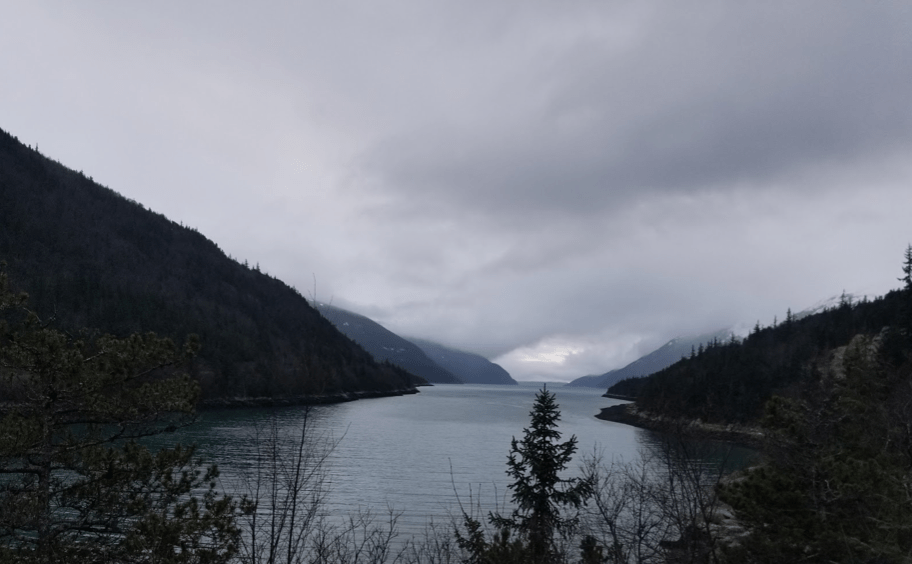By Alysha Page
Within the first three weeks of being in Alaska, I had the opportunity to go out to Dyea, Alaska. The location of the first landing port of the “Stampeders”, men and women that traded and settled during the Gold Rush.

Figure 1: Standing in front of Long Bay in Dyea, Alaska on my way back into Dyea where the once boomtown stood.
In the fall of 1897, it was a Boomtown thanks to the large influx of those searching for gold.. Prior to the Gold Rush, the Chilkat Tlingit people used this location as a trading post. The name Dayéi means “to pack,” and was one of three locations where one could obtain access to the Chilkoot pass (the pass that was crossed to get to Dawson to search for Gold).

Figure 2: Dyea the port town of the Chilkoot Trail, and the landing location of Company l, 24th Infantry. This was not only the town where tens of thousands of stampeders descended upon Alaska in the hunt for gold but also the first sight of Military presence in the yukon (14th Infantry).
Camp Dyea was established upon the U.S. Army Troops armies’ arrival in March 1898 and would later be the location where Company L arrived later in May. The town after a huge increase in the population began to decline in the spring of 1899 due to weather slowing transportation. According to Letters Received in the District of the Lynn Canal from the National Archives in D.C., a fire broke out and destroyed the U.S. Army Campgrounds. Captain Hovey said, “the wind and conditions were unfavorable we would have then been forced to leave; this opened a new element of dangers not hitherto considered in the use of that place as a post and gave me cause for so much anxiety for the possibility of the future that I made it a rule to be out and about several times during the night.” The conditions were so poor that Captain Hovey requested that they abandon the town.
A once thriving boom town was soon deserted and by 1900 there were only about 250 living in Dyea and 71 by 1901. Today the land is mostly flat and empty, with placards to remind us of what once was.

Figure 3: “Busted and Gone” All that remains of what once was a thriving town is this False front of the A.M. Gregg Real Estate office.
Standing on that ground made me think of the determination of these fortune seekers and even more the courage of this all Black military regiment to come to enforce order in a mostly white territory.
Find out more about Dyea here: https://www.nps.gov/klgo/learn/historyculture/dyea.htm

Figure 4: A view of Long Bay, the last resting place of the merchant ship Bark Canada which can only be seen at low tide. More information can be found here: https://www.nps.gov/klgo/learn/news/barkcanadastudy.htm

Figure 5: Deb Boettcher, KLGO Museum Technician and my tour guide for the day, reading the sign “Maintaining Order” about the presence of the Buffalo Soldiers (Company L, 24th Regiment) stationed Dyea.

Figure 6: Standing in the space that men and women stood and started an adventure some hundred years ago was a surreal feeling. Once there stood a booming town and one of the largest hotels in Dyea, the Olympic Hotel. A wonderful representation of how quickly Dyea rose and fell, built in March 1898 it was soon gone without a trace. Dyea was affected by the building of the White Pass & Yukon Route railroad, the Spanish American War (which took attention from the Klondike Gold Rush), and poor weather.

Figure 7: “A Busy Boomtown” A the height the Gold Rush anywhere from 30,000- 40.000 stampeders migrated to this area for the hunt for gold.

